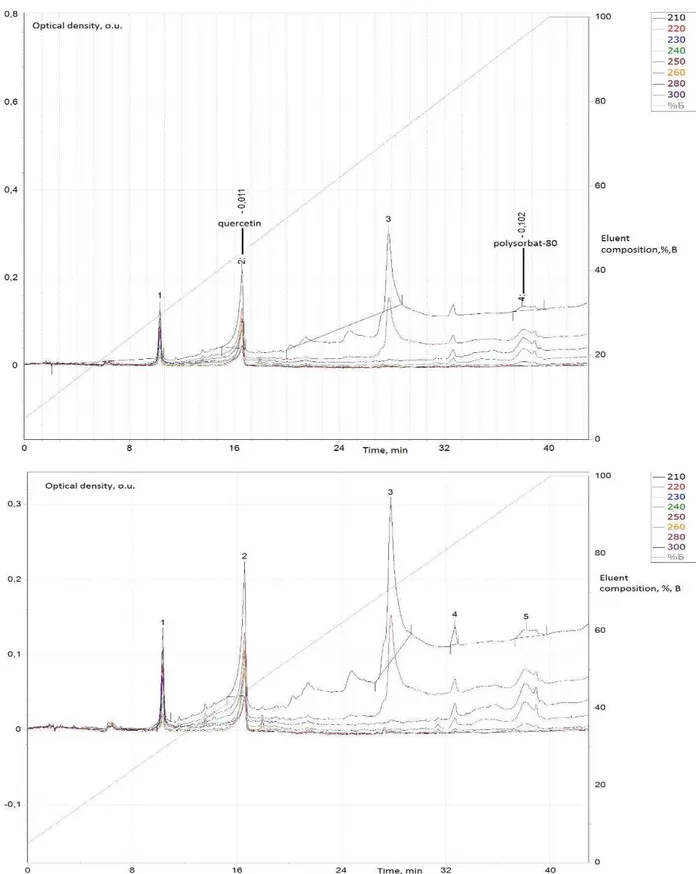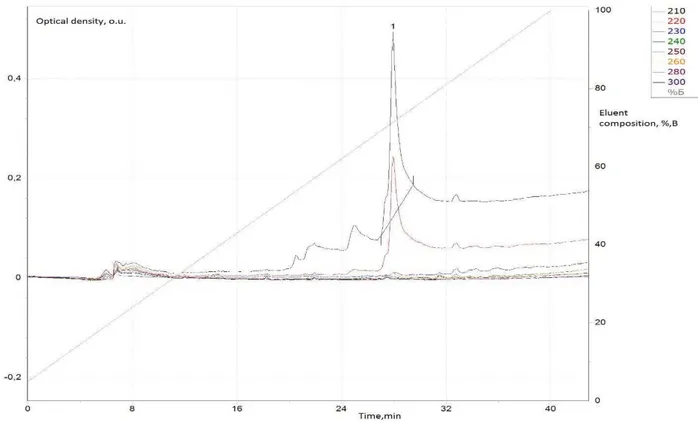HPLC FOR CONTROL STABILITY OF QUERCETIN INJECTABLE DOSAGE FORM
Texto
Imagem



Documentos relacionados
The presence of the hydroxyl group at C-3 position of the skeletons of quercetin, miricetin, catequin and morin has been shown to be responsible for the potent inhibitory action
To explore the mechanisms of quercetin in pulmonary angiogenesis, mRNA and protein levels of VEGF-A were assessed, and found to be signi fi cantly decreased after quercetin
In summary, all evaluated flavonoids (hesperidin, naringin, and quercetin) exerted antioxidant activity, as shown by the increased levels enzymatic and non- enzymatic defense
Scalia & Mezzena (2009) evaluated the stability of encapsulated quercetin in lipid microparticles that were composed of tristearin as the solid core and phosphatidylcholine
Em relação aos constituintes sangüíneos, observa- se que a associação bixina + quercetina reduziu o nível de uréia (Tabela 2) em torno de 5,73% com relação ao grupo tratado
Furthermore, consi- dering the therapeutic advantages of topical administration of quercetin to control UVB-induced oxidative damages, the proposed methodologies for quercetin
Seventeen compounds, mainly methyl ethers of quercetin (isorhamnetin, rhamnazin), kaempferol (kaempferide, rhamnocitrin), and ellagic acid as well as quercetin, quercetin
Currently, only one report indicated the presence of flavonoid quercetin in fruits by HPLC analysis ( Omena et al., 2012 ) and another work described flavonoids and tannins in